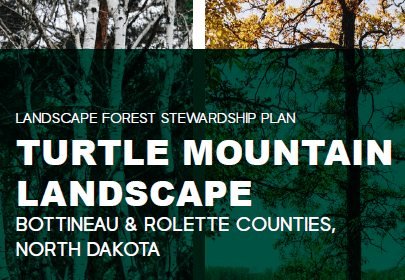
BISMARCK, N.D. (NewsDakota.com) – A unified approach to managing the forest in the Turtle Mountain region of North Dakota has come to fruition with the completion of the Turtle Mountain Landscape Forest Stewardship Plan.
These forest resources are essential to many, including the North Dakota Forest Service, partner agencies, businesses, and stakeholders throughout the state. In an effort to maintain the vitality of these forest resources, a collaborative
group of stakeholders were tasked with writing a cross-boundary Forest Stewardship Plan encompassing the
entire Turtle Mountain Region in North Dakota.
This landscape forest stewardship plan is the first of its kind in North Dakota, in terms of scope and scale. The Turtle Mountain region is covered in an aspen and birch forest that is unlike anywhere else in North Dakota. This forest system needs regular management to sustain its ecological importance and unique wildlife habitat qualities, which are essential elements of the forest to different stakeholders. The document seeks to establish the current baseline condition of the forested resource and identify mutual goals for future forested conditions. This plan will improve and promote the legacy of the Turtle Mountain landscape and capture what it means to all who live, visit, and recreate in the region.
Collaborators on the plan included the North Dakota Forest Service, North Dakota Game and Fish, Turtle Mountain Band of Chippewa, North Dakota State University Extension, and various other regional stakeholders. These agencies and individuals were concerned about the decline in the forest due to insufficient management in the region. This decline can be attributed to a decrease in timber harvested for home heating that once effectively maintained the ecological balance over previous generations.
After over a year of collaboration, the Turtle Mountain Landscape Forest Stewardship Plan is complete. The plan developed various goals and objectives to promote a healthy forest for future generations while continuing to provide for multiple uses, including recreational opportunities, critical wildlife habitat for ruffed grouse, and maintaining a safe and resilient forest for years to come.
For readers interested in learning more about the plan, it can be found on the North Dakota Forest Service website at www.ag.ndsu.edu/ndfs. Questions about the plan can be directed to Cody Clemenson at cody.s.clemenson@ndsu.edu or 701-228-5490. Landowners interested in managing their forest resources can request a site visit by calling 701-228-5490 or 701-683-4323.
